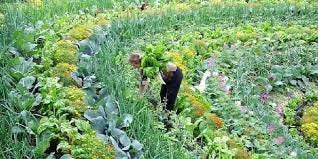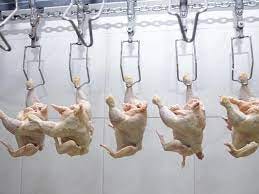‘Regenerative agriculture’ sounds like an elevator pitch with zero prospects for a Netflix series with a Frankenstein-themed plot, set in a garden centre.
An initiative to restore the health of the soil and thereby the health of consumers, regenerative farming is nevertheless increasing in popularity. Not in the US, however, where the practice has been adopted by only a small percentage of farms and where net US farm income declined 23 percent in 2023 from 2022. US farm policy does not support efforts to preserve natural ecosystems. What the government does support is subsidised crops such as maize - to the tune of roughly $428 billion.
The EU, by contrast, is investing €30 million over three years in regenerative farming. The UK, no longer a member, won’t benefit. All the same, the UK government has been a loud supporter of regenerative farming, even promoting it as a sub-plot on The Archers, its seven decades-plus agricultural propaganda radio serial. But you won't, if you're British, be in the least surprised to learn that this very week the government decided legislating for a percentage of farmland to be returned to Nature is too expensive to continue to support.
“Food security” is the explanation, meaning having access to a sufficient quantity of affordable nutritious food. It’s a wily descriptive, “security” a weasel-word that triggers alarm among the populace. In the UK, it’s a distraction from the radical diminution in the food supply since the country exited the EU, instigating a steep rise in the cost of importing and exporting food. Since Brexit, Scottish salmon farmers, to cite just one sector, have lost £100 million a year in exports. Examples such as these impact relations between independence-seeking Scottish voters and the British government.
In the past year, Britain has seen 25 percent of British farmers claim they are currently living below the poverty line. 49 percent of British fruit and vegetable farmers believe they will be out of business in the next 12 months. Along with legislative challenges, devastating flooding plus the high cost of fertilizer imported from US, Chinese and Indian producers has made UK food production more expensive.
With the semi-collapse of British farming, the nation has had to depend on higher food imports. What, though, is being imported? US consumers appear insouciant about what goes into their cattle. In an American steakhouse, a waiter asking whether you want your steak rare, medium or well-done and with fries, might more appropriately inform diners, “You’ll be having that with progesterone, testosterone, estradiol, zeranol, melengestrol acetate and trenbolone acetate.” Yum.
Those synthetic growth hormones, approved in the raising of meat in the US, are banned by EU food safety regulations, some of which still apply to the UK. While the UK government has vowed never to allow chlorine-washed chicken or hormone-fed beef into the country, farmers of British pork and beef worry that regulations behind the government’s desperate new trade deals could turn on a dime, particularly when a shortage of food looms.
Deals to replace pre-Brexit opportunities have been made (almost exclusively) with the old Commonwealth. Nearly half Australian cattle is treated with growth hormones while only New Zealand cattle and sheep bearing the Quality Mark which states it has met “the highest quality standards such as eating quality, food safety and animal welfare”, can be guaranteed hormone free. Since we import whole carcasses, not butchered and packed portions already labelled for sale, we have no means of identifying whether it is or not.
As to pigs, the number of UK pig farms is shrinking, down from a pig population of around 8 million in the 1990s to 5 million today. Farmers cannot compete in price with the £2 billion-worth of pork products imported into the UK, predominantly from Europe. You may believe the sausages and bacon you have bought is correctly labelled British. But any imported food that is processed in Britain can be labelled ‘British’.
Meanwhile, as Tabled noted in April 2021, all vegetables globally are losing their nutritional value. Twenty years ago, scientists at the University of Texas discovered that the nutrients in 43 of the mostly vegetables they studied had plummeted - the calcium in green beans from 65 to 37mg, the vitamin A in asparagus by nearly half. A 2018 study of rice found the increase in CO2 in the atmosphere as a consequence of climate change reduced its protein, iron and zinc content.
The World Health Organization and the Consultative Group of International Agricultural Research both back ‘biofortification’, a process of replenishing lost micronutrients through selective breeding, genetic modification, or the use of enriched fertilizers. Aren’t you relieved? Big Food Biz can certainly see the benefits of investing deeply in that.
Regenerative farming could do this naturally. But we’re up against the clock. Besides, farmers globally have little incentive to revert to farming the traditional way. Their profits are savagely undercut by supermarket contracts. Consider, though, that once a farm has given up producing vegetables or fruits, meat or eggs or dairy products, they won’t go back to it. The land will be sold to second home-owners or to developers to build houses too expensive for local purchasers.
If we want traditional farms to survive, if we want food that is nutritious not merely filling, we have to put our hands in our pockets and buy more expensive produce from farmers practising regenerative farming.
On this miniscule Greek island in the Dodecanese lives a single couple, its only inhabitants. They run a taverna reached only by boat, and grow everything they cook. I ate butter beans there that were black! This nutritious and delicious dip they served is made from split yellow peas which I suspect they may not grow on the island. But you can get them from your supermarket.
200g/7oz yellow split peas, washed
750ml/25fl oz water
one large red onion, peeled and finely chopped
1 or 2 cloves garlic, peeled and chopped
1/2 to 1 cup olive oil plus extra to finish
juice 1 lemon
salt and pepper to taste
1-2 tablespoons capers
olive oil
Add the split peas to the water in a pan with all but 2 tablespoons of the onion and the garlic and bring to the boil, skimming off any foam. Simmer till soft and turning mushy, adding more water if necessary.
Drain, reserving a mug of the water, and dump in a processor or use an immersion blender to puree the peas, loosening them with olive oil and the juice of a lemon, and a little of the cooking water if necessary. Season with salt and pepper to taste. Scrape into a bowl and sprinkle over the remaining chopped onion and capers and drizzle over a little olive oil. Serve with warm pitta bread to dip.








Wonderful post! So important to draw attention to the loss of nutrients in our food. Shows how misguided the focus on 'efficiency' in agricultural production is. We need quality, not just quantity.
What an informative and hard hitting piece. We should all take note.